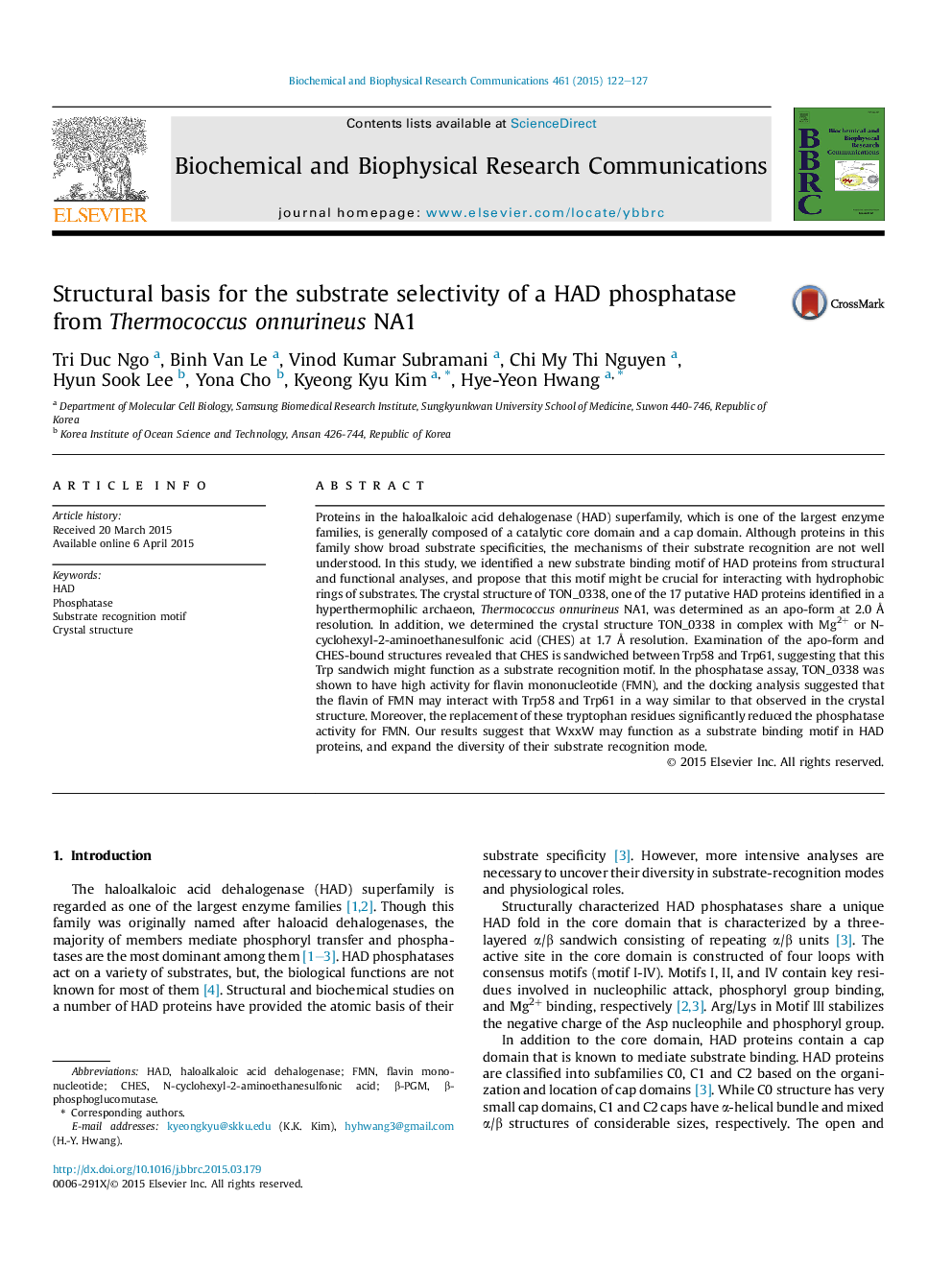| Article ID | Journal | Published Year | Pages | File Type |
|---|---|---|---|---|
| 10751607 | Biochemical and Biophysical Research Communications | 2015 | 6 Pages |
Abstract
Proteins in the haloalkaloic acid dehalogenase (HAD) superfamily, which is one of the largest enzyme families, is generally composed of a catalytic core domain and a cap domain. Although proteins in this family show broad substrate specificities, the mechanisms of their substrate recognition are not well understood. In this study, we identified a new substrate binding motif of HAD proteins from structural and functional analyses, and propose that this motif might be crucial for interacting with hydrophobic rings of substrates. The crystal structure of TON_0338, one of the 17 putative HAD proteins identified in a hyperthermophilic archaeon, Thermococcus onnurineus NA1, was determined as an apo-form at 2.0Â Ã
resolution. In addition, we determined the crystal structure TON_0338 in complex with Mg2+ or N-cyclohexyl-2-aminoethanesulfonic acid (CHES) at 1.7Â Ã
resolution. Examination of the apo-form and CHES-bound structures revealed that CHES is sandwiched between Trp58 and Trp61, suggesting that this Trp sandwich might function as a substrate recognition motif. In the phosphatase assay, TON_0338 was shown to have high activity for flavin mononucleotide (FMN), and the docking analysis suggested that the flavin of FMN may interact with Trp58 and Trp61 in a way similar to that observed in the crystal structure. Moreover, the replacement of these tryptophan residues significantly reduced the phosphatase activity for FMN. Our results suggest that WxxW may function as a substrate binding motif in HAD proteins, and expand the diversity of their substrate recognition mode.
Keywords
Related Topics
Life Sciences
Biochemistry, Genetics and Molecular Biology
Biochemistry
Authors
Tri Duc Ngo, Binh Van Le, Vinod Kumar Subramani, Chi My Thi Nguyen, Hyun Sook Lee, Yona Cho, Kyeong Kyu Kim, Hye-Yeon Hwang,
